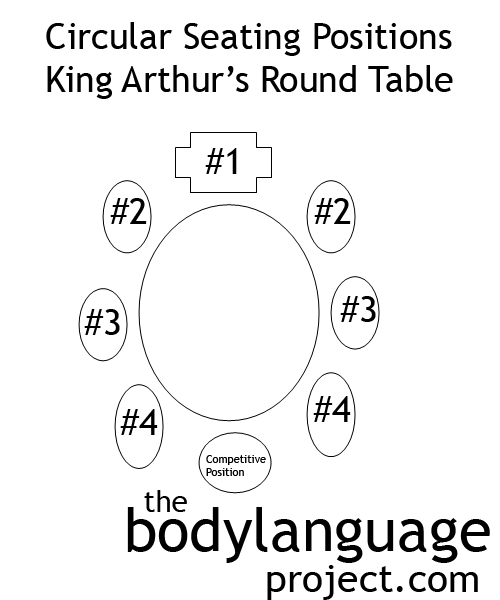When no leader is

When a known leader is seated at a circular table, power trickles down as the relative distance increases. In this case #1 has the most power followed by #2, #3, #4 and finally the person who sits opposite. The person opposite finds himself in a unique situation of having to face the leader head-on!
present, round tables can be used to create informal settings unlike rectangular tables that are used to conduct work or to reprimand employees. In offices, round tables are usually a place to relax and converse or to drink coffee. Smart offices will use these areas to build alliances with potential clients, especially timid ones, break down barriers, and create rapport. Round tables can reduce pressure and build trust. Round tables also offers neat divisions or ‘pie shapes’ where each person receives the same amount of space or “territory” that collect into a common center. Square tables on the other hand, have territories that lack clear boundaries which can present their own power struggle.
King Arthur attempted to equalize authority and status amongst his knights with the “round table.” He felt that without creating a head of table, his peers would see themselves as more equal preventing quarrels. Previous to the round table, a medieval king usually sat at one end of the table, with the court jester facing him at the other end. The knights were seated at the two sides with the most important among them seated closer to the king. What King Arthur failed to realize with his round table, however, was the trickle down effect where those sitting to his immediate left and right held the next level of power due to their proximity to him. As one was more removed from the King, their level of status diminished likewise until finally reaching the furthest party. Unfortunate for this person, he faced the King directly putting him in a competitive arrangement! Ironically, and counter to his initial assumption, the round table can still present difficulties in creating positive outcomes especially where a definitive leader is present.

